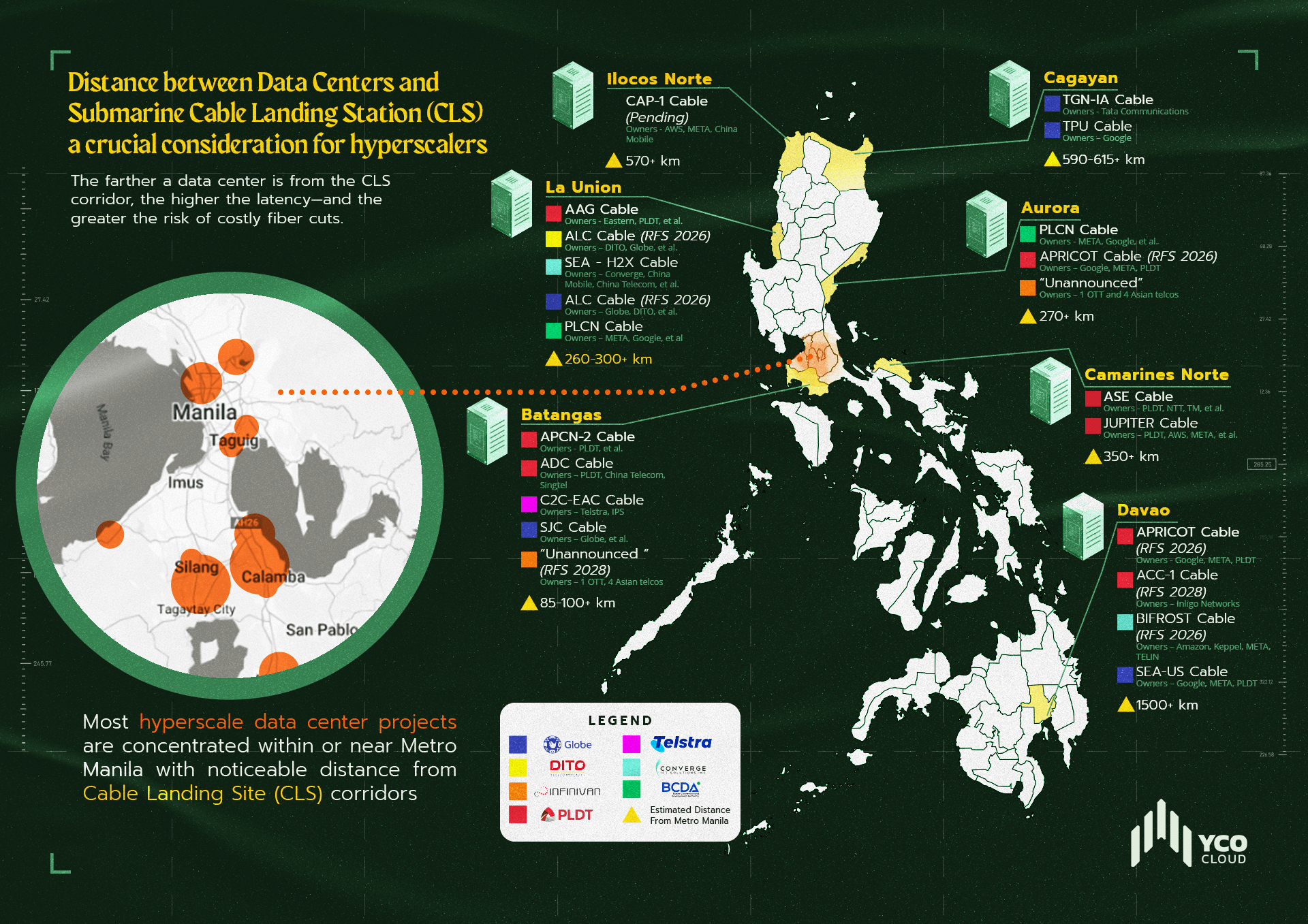
Building hyperscale facilities near CLS hubs is a strategic opportunity the Philippines shouldn’t miss to become the next data center hub in the region
Datacenters are specialized facilities that house IT infrastructure such as servers, storage, and networking equipment. Traditionally, they were built, operated, and managed by incumbent telecommunications providers—primarily to support their own network operations and serve large enterprise clients. These facilities store, process, and manage vast amounts of data. They are the physical backbone that enables the applications and digital services users interact with daily. Historically, colocation was the dominant business model for datacenters. However, the rise of cloud computing, widespread digital content consumption, and the global surge in artificial intelligence (AI) adoption have fueled the emergence of a new category: hyperscale datacenters. These derive their name from the hyperscale cloud providers—or “hyperscalers”—they serve. This includes global giants such as Amazon, Google, Meta (Facebook), Apple, Microsoft, IBM, and Oracle.
Due to the massive capital and operational requirements of this market, only a few players operate hyperscale datacenters at scale.
Hyperscale Momentum in the Philippines
Hyperscalers initially established their presence in the Philippines through smaller edge computing facilities meant to support localized data processing and reduced latency. These hyperscalers were leveraging primarily traditional, more modest data centers located in Metro Manila and surrounding areas like Cavite and Laguna. These areas offer a combination of accessible real estate, established power grids and relatively skilled workforce.
In recent years, the country has seen a wave of hyperscale data center project announcements from top telco providers and other data center operators. This signifies a more ambitious commitment to the Philippine market aiming to meet the complex demands of hyperscalers. However, while traditional factors like real estate, power and skilled force remain important, a new critical challenge has emerged: the considerable distance of data centers from the country’s submarine cable landing stations (CLS).

Backhaul Gaps and Latency Challenges
Hyperscalers demand ultra-low latency and near-perfect uptime - both jeopardized by long-distance backhaul routes connecting Cable Landing Stations (CLS) to their data center clusters. Think of that backhaul as the major highways of the internet, where vast amounts of data travel between countries, regions and even continents. The greater the distance, the slower the data is transmitted and the higher the probability to gather more traffic.
These routes are often over fiber infrastructure built by incumbent telcos, whose networks were primarily designed around population centers—not hyperscale performance needs.
Incumbent telcos often hesitate to provide dark fiber, despite it being the preferred choice for hyperscalers and Over-the-Top (OTT) operators. Dark fiber can be compared to unused, reserved highway lanes: it is an unactivated fiber optic cable, ready for use, that offers complete control over network speed, security, and capacity to the lessee or buyer.
Hyperscalers driving the expansion of subsea cables
In contrast to legacy telco models, today’s international submarine cable projects are often led by hyperscalers and OTTs. These players own multiple fiber pairs in the systems they invest in, and they require the capacity to land as close as possible to hyperscale datacenter infrastructure.
Instead of monopolizing CLS-to-datacenter backhaul as telcos traditionally did, hyperscalers seek access to multiple carrier-neutral terrestrial network providers, each with diverse and redundant routes to global metro markets.
Modern subsea cable owners prefer landing their capacity at carrier-neutral colocation, providing them immediate access to a diverse ecosystem of potential customers and partners, or CLS-enabled datacenter sites, facilities providing direct connection point for subsea cables to enter and exit a data center. These facilities offer co-location for CLS equipment, as well as access to power, space, and direct cross-connects to other carriers or content providers. Purpose-built dark fiber networks—metro and long-haul—linking these facilities are becoming essential infrastructure.
The CLS-Enabled Hyperscale Datacenter: A Strategic Opportunity
A CLS-enabled hyperscale datacenter combines high-capacity computing infrastructure with a submarine cable landing station. This pairing significantly improves global connectivity, lowers latency, reduces cost, boosts data transmission capacity and simplifies deployment.
Key beneficiaries of such a setup include:
Strategic Hubs and the Way Forward
There are currently several emerging submarine cable landing hubs in the Philippines, located in the provinces of Batangas, La Union, Aurora, Davao, Ilocos and Cagayan. Hyperscalers landing cables in these areas must transport enormous volumes of data over long distances to reach hyperscale facilities—typically still based in or near Metro Manila.
Yet, robust, underground, low-risk fiber backhaul infrastructure from these CLSs is still lacking. Unless hyperscale datacenters are developed within 80–100 km of CLS hubs, or unless purpose-built dark fiber routes are constructed, the Philippines may miss the opportunity to become a true Asia-Pacific subsea cable hub.
Since most incumbent telcos are reluctant to offer dark fiber or build to hyperscaler specifications, there is a clear gap in the market. The development of CLS-enabled hyperscale datacenters could be a blue ocean strategy for serious players aiming to lead in this space.
Who do you think is up for the challenge?